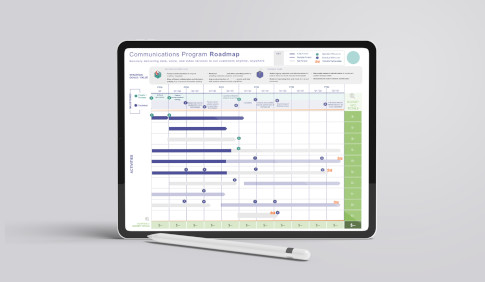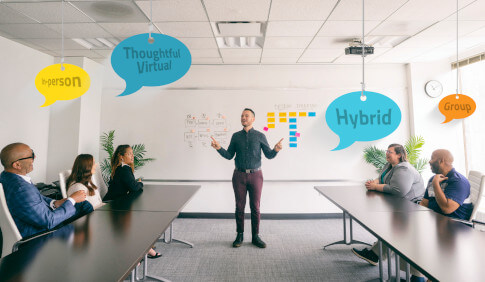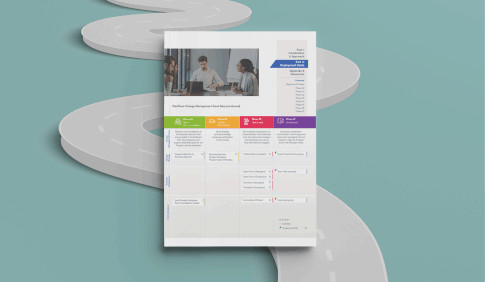In part one of this two-part blog series, “Nine Best Practices to Design Meetings that Produce Results”, we touched on the importance of having a designated facilitator to lead meetings. Meeting facilitation is the process of designing and running a successful meeting of the minds, and the management of a process to meet the goals of a group. Our meeting facilitators work to balance the passion of the group, the agenda, and the leaders’ needs to guide the group to the intended outcome by using the following techniques:
Create a Clearing
As a facilitator, your mood and energy impacts the success of the meeting, so take the time to get clear about your thoughts, feelings, and beliefs about the meeting before it begins. Create a clearing by bringing only what is essential to achieving the group’s desired outcome. During the meeting, make efforts to mentally step back from the discussion and notice your volume, your tempo, and your nonverbal actions. Small adjustments can have a big impact on group performance.
Manage the Energy
Facilitators are responsible for managing participants’ energy levels throughout the entire meeting. Taking stretch breaks, changing from small to large group discussions, using music and short videos, and eliciting fast “popcorn” responses are effective ways to prevent the group from feeling bored.
Practice Empathetic Listening
Great facilitation requires great listening skills. As a facilitator, you should constantly be analyzing and synthesizing what you are hearing, and reflecting back on the facts and the emotions of the group. Listening to participants is a sign of respect and is critical to ensuring that the group feels that the meeting was successful.
Establish a Working Definition of Consensus
Consensus does not mean that everyone should agree with every statement or decision. Consensus means that participants feel that their inputs were heard, they were treated fairly, and they can live with and commit to the outcomes. Facilitators should establish other meeting norms such as ground rules or guiding principles at the start of the meeting that will support the meeting outcomes.
Use the Parking Lot Tool
A “parking lot” is a facilitation tool that serves as a temporary holding area for ideas or suggestions that are not directly related to achieving the meeting outcomes. Keep the parking lot visible to the room to remind the participants that his or her idea will not be ignored and could form the basis for a follow-up discussion.
Capture the Group’s Memory
It is essential to document the group’s collective memory during sessions to ensure participants remember what was agreed upon and to maintain the momentum created during the session. Group memory consists of the collective rationales, decisions, and any other discussions that will be relevant to future work or interest. As a facilitator, do not keep the group’s decisions implicit; state decisions explicitly in the room and ensure your knowledge agent captures them so that all can see.
Skilled facilitators who use these six techniques are critical to keeping the group on focus and encouraging equal participation of all those involved. For more techniques used by extraordinary meeting facilitators, go to MeetingPRIMES.com.





